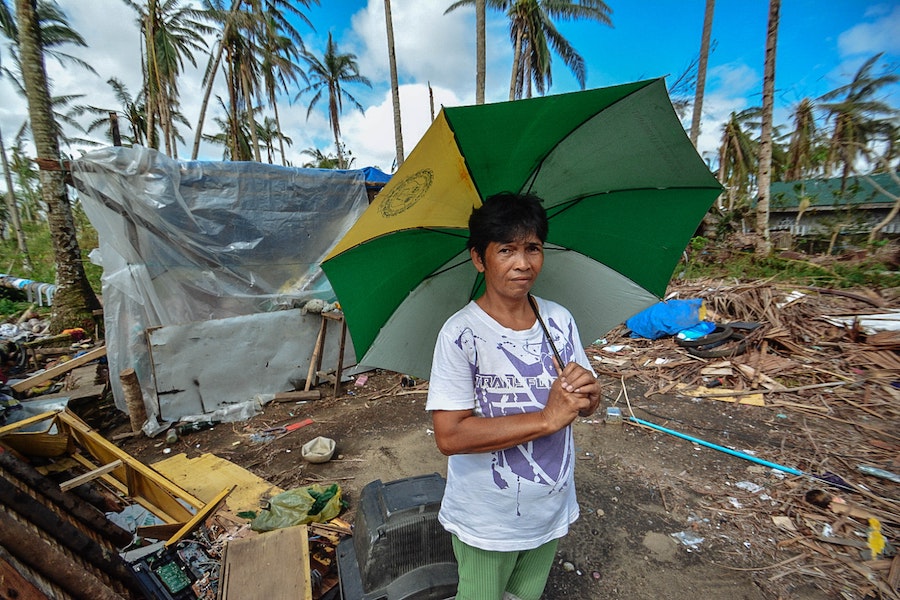Can changes of psychosocial resources predict posttraumatic growth in low-income, female Hurricane Katrina survivors?
Manove, E. E., Poon, C. Y. S., Rhodes, J. E., & Lowe, S. R. (2021). Changes in psychosocial resources as predictors of posttraumatic growth: A longitudinal study of low-income, female Hurricane Katrina survivors. Traumatology.
https://doi.org/10.1037/trm0000318
Summarized by Ariel Ervin
Notes of Interest:
- Although many trauma survivors experience post-traumatic growth (PTG), scholars still don’t know if the five domains of PTG correlated with pre-and post-traumatic changes in relevant psychosocial resources and whether these associations differ throughout the aftermath of the trauma.
- This study explores whether the five domains of PTG correlate with pre-and post-traumatic changes to related constructs (sense of purpose of life, social support, and religiosity) 1 year before Hurricane Katrina and 4 & 12 years afterward.
- An increase in one’s sense of purpose in life, religiosity, and perceived social support are predictors of PTG, even after 12 years after Hurricane Katrina occurred.
- One’s sense of purpose in life, religiosity, and perceived social support are all individually correlated with greater well-being and lower levels of distress.
- PTG is a potential predictor of the positive development of trauma survivors.
- Practitioners can help reduce trauma survivors’ symptoms and promote PTG by helping them rebuild their sense of purpose and their support networks.
Introduction (Reprinted from the Abstract)
This study examined how well the Posttraumatic Growth Inventory (PTGI; Tedeschi & Calhoun, 1996) corresponds with self-reported pre- to posttrauma changes in related constructs, including sense of purpose in life, religiosity, and social support. Participants were 328 low-income mothers (85.2% non-Hispanic Black) who survived Hurricane Katrina and completed surveys approximately 1 year predisaster (Time 1), 4 years postdisaster (Time 2), and 12 years postdisaster (Time 3). PTG was assessed at Time 2 and Time 3, and related constructs were assessed at all waves. Pre- to postdisaster changes in the following related constructs were significantly associated with the corresponding PTGI subscales: purpose in life with Relating to Others, Personal Strength, and New Possibilities; religiosity with Spiritual Change; and perceived social support with Relating to Others. The results demonstrate a link between a number of self-reported pre- to posttrauma psychological changes measured over time and the PTGI. Replication of these results using measures more closely aligned to the PTGI subscales, among more representative samples and in the aftermath of other traumatic events, is warranted.
Implications (Reprinted from the Discussion)
The purpose of this study was to examine how the PTGI may be associated with pre- to posttrauma changes in related constructs of PTG at four years and 12 years after the trauma. We found small but significant correlations between pre- to posttrauma changes in specified measures and the PTGI subscales hypothesized to parallel them at both timepoints. Specifically, both our bivariate and multivariable analyses showed that changes in purpose in life were positively associated with PTGI Full Scale, changes in perceived social support were positively associated with PTGI subscale Relating to Others, and changes in religious importance were positively associated with PTGI subscale Spiritual Change.
Our findings parallel some of the findings from the two prior studies that have examined associations between changes in pre- to posttrauma psychological resources and PTGI subscales. As with Frazier et al. (2009), we found that changes in religious importance were significantly related to the PTGI Spiritual Change subscale in bivariate correlations at T3, as well as in multivariable regressions at T2 and T3. Thus, we provide additional evidence that the PTGI appears to correspond to pre- to posttrauma change in religiosity. Interestingly, changes in religious attendance were not found to be significantly associated with the PTGI Spiritual Change subscale at both timepoints, suggesting that this subscale captures an individual’s religious values, rather than external expressions of one’s religiosity.
In addition, Frazier et al. (2009) found that pre- to posttrauma changes in a “current standing” version of the PTGI were significantly but moderately associated with corresponding PTGI subscales. We likewise found that changes in constructs of social support and purpose in life were associated with related PTGI subscales. Unlike in our study, Frazier et al. (2009) did not find associations between PTGI subscales and pre- to posttrauma changes in measures of positive relationships and meaning in life. And, unlike Yanez et al. (2011), the only other study to compare pre- to posttrauma changes in similar constructs with the PTGI, we found significant associations.
To access this article, click here.










